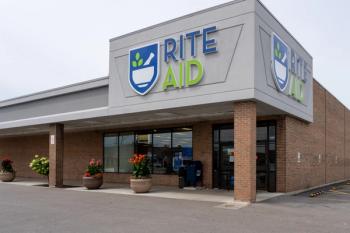
- Total Pharmacy® January 2023
- Volume 01
- Issue 01
2023 Technology Trends: Examining the Impact on Independent Pharmacy
A new report unpacks some of the challenges that independent pharmacists may face in the years ahead.
It’s been a strange few years for independent pharmacies. From the COVID-19 pandemic accelerating innovation to the rapid uptake of technology across health care spaces, many independent pharmacists have needed to change how their pharmacies operate.
A 2022 report published by Prescryptive Health titled “Rewriting the Script: Independent Pharmacy Trends” looked at trends thathave already led tobig changes in the pharmacy landscape and examined why now is the time for independent pharmacists to evolve and seize those opportunities.1
Paige Clark, RPh, vice president of pharmacy programs and policy for Prescryptive Health, noted that despite some challenging headwinds, most independent pharmacies are in a great position for growth.“Within the next decade, a physician shortage and aging population means that the demand for healthcare services will outpace supply,” she said, adding that while one-quarter of US adults are currently without a primary care provider, more than 50% of the population takes a prescription medication at least once a month. That means opportunity for pharmacists.
“Things are changing so fast in our pharmacy ecosystem that it became imperative that we, as partners to community pharmacy, absolutely understand what is happening,” Clark explained. “We had the ability not only to look nationwide and determine the most important factors that ultimately will impact not only the profession, but to also address the profitability challenges.”
Erin Koenemann, senior director of marketing at Prescryptive Health, was instrumental in putting together the report, collecting timely and important information designed to help independent pharmacists continue to thrive. “Part of our approach was to also understand consumers; a lot of their behaviors have been impacted by the pandemic and there’s more openness to using their mobile phones,” Koenemann said. “We knew that technology was really important to pharmacies but we didn’t realize how important it could be to their business and also for the consumers who frequent the pharmacies.”
The Price You Pay
A 2022 report by the Kaiser Family Foundation (KFF) revealed that 3 in 10 American adults have, at some point during the past year, not taken a medication as prescribed because of cost.2 This followsearlier reporting from KFF showing that half of adults—approximately 4 in 10—in the United States have difficulty affording the costs associated with accessing health careand have delayed or gone without care as a result.3
Exorbitant health care costs are also 1 reason technology has become such an important tool for many, with individuals across the country turning to the web to order prescriptions and find better deals at different pharmacies.“Consumers want to have more control overtheir prescriptions and technological innovation can help them find that control,” Clark said.
According to Prescryptive’s report, 95% of consumers were at least somewhat aware that medication could be priced differently amongpharmacies, with 72% of respondents indicating they would be likely to use their mobile phone to compare drug prices and shop around. “We saw a growing rule of consumerism and the need for technology in pharmacy,” Koenemann said.
For consumers, the benefits of this access to pricing information are myriad. The report noted that 90% of consumers would appreciate knowing the price of medication before actually getting to the pharmacy;an additional 85%indicated that having this knowledge would improve their pharmacy experience overall. What’s more, 73% of those surveyed said they would talk to their health care provider about prescription cost—if they knew these numbers in advance.
“Empowering discussions at the point of prescribing vsthe point of dispensing could help patients become more adherent to their medications, especially when cost is a concern,” Clark explained. “Our findings show that not only are a large majority of consumers hungry to shop—especially with mobile devices—but that the ability to do so will help retain business.”
Clark added that the tipping point for this consumerism has been the COVID-19 pandemic, which has accelerated consumers’ adoption of technology at a rate that pharmacy hasn’t experienced.“ When I talk to pharmacists today, it’s no longer about just trying technology, but about getting in line right now because this is happening,” she explained. “Community pharmacy is going to live or die depending on how quickly they adapt and we’ve never had to pivot this quickly before.”
The Digital Platform
Decision-makers at independent pharmacies understand the need for convenience and expertise and are starting to recognize how technology can help maintain and exceed their existing standards while driving profitability.
In fact, more than 90% of pharmacists who responded to the Prescryptive survey believe that technology canhelp improve their pharmacy’s profitability and also improve the entire patient experience when used the right way. But despite this belief, the survey results show that only 53% of pharmacists are actually utilizing the technology necessary to compete for patients and 40% of pharmacists are not using technology to their fullest potential.
These results, then, set up a significant opportunity for pharmacists willing to embrace technology to the fullest in the coming year.
Money Matters
Another trend that has integrated itself in the pharmacy world is new cash pay options, an area in which pharmacists and consumers alike are still learning more.
“We are at the beginning of a new year; we don’t want community pharmacists getting 6 months into the year before they pick their heads up and realize how dramatic the shift has been in increased deductibles,” Clark said. “Understanding different cash options is the most urgent trend to keep our community pharmacies healthy when it comes to AI [artificial intelligence]-optimized pricing.”
Based on recent numbers, approximately 10% of prescriptions were paid utilizing cash discount programs in 2021, an increase from 6% five years earlier, though more than 50% of those purchases were made with discount cards. Many pharmacists, dismayed by the exorbitant fees, lack of reimbursement, and overall messy situation created by discount cards, have stopped accepting them.But despite this decision, pharmacists are frequently required to honor certain drug discount cards due to contracts with pharmacy benefitmanagers. As 1 survey respondent described it, “The fee to process discount cards, coupled with the low copay rate, leads to a financial loss for the pharmacy the majority of the time.”
Still, respondents saw on average a 38% increase in discount program usage over the last 2 years, with 56% accepting cash and/or discount cards.“People are unaware that many of the popular discount cards can potentially harm independent pharmacies,” Clark noted.
Perhaps surprisingly, the report found that 31% of consumers paid out of pocket for medications and 61% of consumers paid cash—despite having insurance. The reasoning? Respondents indicated that their medication was less expensive with a discount card than with their insurance.
Essentially, Clark explained, patients are extremely loyal to their pharmacists and many don’t understand how these discount cards hurt. In fact, 75% of consumers indicated that they would be willing to pay slightly more for a medication by using a discount card that didn’t negatively impact their home pharmacy. "This shows consumers are more inclined to prefer pharmacy-friendly options when theyare educated about the negative impacts of cash discount programs,” she said. “Additionally, 88% of consumers said they would be willing to switch discount card programs if the discount card company was selling their personal data, even if it meant paying slightly more.” Therefore, a technology-driven cash discount solution that benefits both parties is the solution that could strengthen independent pharmacies’ financial position while delivering on consumer demands.
“There’s a lot of inconsistency from the independent pharmacy’s point of view in how they have a price strategy,” Clark said. “Many have price matching for discount cards, but we believe [that strategy] results in the lowest price and the race to the bottom, which would mean more profitloss.”
What’s the solution, then, as independent pharmacies are trying to grow and become more profitable? One possibility, Clark noted, is a smart pricing solution driven by AI that can keep customers happy and boost a pharmacy’s bottom line. Prescryptive’sdata show that 93% of pharmacy decision-makers believe they offer competitive prices; 16% revealed they try to be the lowest-cost pharmacy available to consumers—but knowing for certain if that’s true is a challenge. AI pricing can take the guesswork out of drug pricing by using data-driven insights and expert analytics to provide accurate,
Looking Ahead
As changes to the industry show no sign of slowing down, forward-looking report data are helpful to predict what might become a reality for independent pharmacists over the next 2 years. According to Clark, some of the data points from the report reveal the key differentiators that can set pharmacies apart based on what consumers are seeking.
A whopping 93% of pharmacist decision-makers believe that pharmacists will play a biggerrole in serving the health care needs of their communities over the next few years—and that technology will be a key driver of the changing role. At the same time, 91% of consumers expect technology to be the reason pharmacies retaintheir business.
“Decision-makers are focusing on improving or providing exceptional customer service, improving their pricing strategy, and adopting advanced technology,” Clark said.
References
1. Rewriting the script: independent pharmacy trends. Prescryptive Health. 2022. Accessed January 23, 2023.
2. Hamel L, Lopes L, Kirzinger A, et al. Public opinion on prescription drugs and their prices. Kaiser Family Foundation. October 20, 2022. Accessed January 23, 2022.
3. Montero A, Kearney A, Hamel L, Brodie M. Americans’ challenges with health care costs. Kaiser Family Foundation. July 14, 2022. Accessed January 23, 2023. https://www.kff.org/health-costs/issue-brief/americans-challenges-with-health-care-costs/
Articles in this issue
over 2 years ago
Best of the Best: Top Total Pharmacy® Coverage in 2022over 2 years ago
Best of the Best: Top Business Strategy Coverage in 2022almost 3 years ago
Total Pharmacy Solutions Summit: Extending Care, Expanding Revenuealmost 3 years ago
Working With Discount Cards and Manufacturer Couponsalmost 3 years ago
Understanding the IRS: Deductions for Pharmacy OwnersNewsletter
Pharmacy practice is always changing. Stay ahead of the curve with the Drug Topics newsletter and get the latest drug information, industry trends, and patient care tips.































































































































































